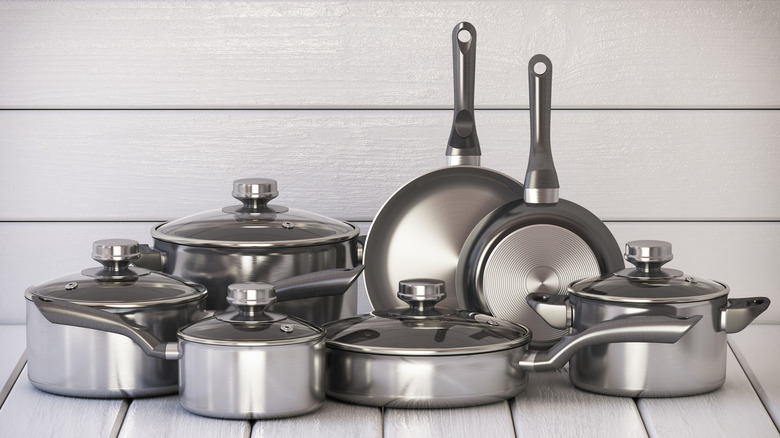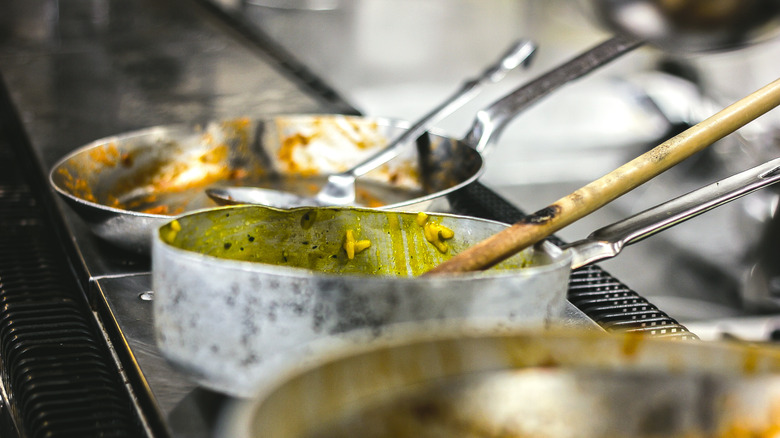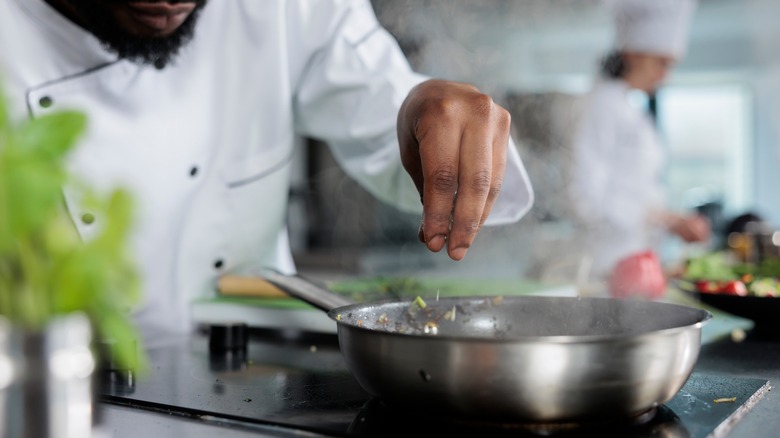The Restaurant Saucepan That Deserves A Spot On Your Stove
There's a not-so-secret culinary tool firmly ensconced in restaurant kitchens across the globe, and it goes by the ooh-la-la French name of "saucier." This pro-level piece of stovetop cookware may be an intimidating tool for many home chefs, but it needn't be. After all, it's just a pan, one for enhancing delicious home-cooked meals in your own kitchen.
A saucier, as you'd imagine, is essentially a pan used to make sauces, custards, roux, gravies, and other liquid or semi-liquid meal components. But the pan's unique shape and characteristics greatly expand its useful applications.
In fact, restaurant chefs place high importance on the pan as well as the associated "saucier chef," whose job is to prepare all the sauces, reductions, pastry creams, and flavor stocks accentuating or accompanying main, side, or dessert dishes. This chef is typically third in importance after the sous chef and chef de cuisine. There's often even a dedicated saucier station placed strategically in the kitchen layout.
The knowledge that professional chefs adore saucier pans is all the more reason to own one yourself. Let's remove the mystique so you can purchase and use this prestigious pan with expertise and personal panache.
A saucier is all about the shape, width, lip, and handle
There's a good chance you've already seen saucier pans in enlightened home kitchens, either as standalone purchases or components of a pre-determined cookware set. They're fairly easy to recognize because of the distinct shape and features, all focused on easy access and compatibility for sauce-making. Essentially, they're designed for liquids that need a good amount of stovetop stirring, whisking, beating, or hand-blending, typically to attain a creamy consistency.
While a standard saucepan features a flat bottom and straight sides, a saucier is typically shorter and wider with rounded or flared sides. This makes it easier to stir and whisk ingredients, putting them within easy reach and spreading the liquids more evenly to avoid scorching. The bottom curves gently upward, eliminating corners and crevices that could trap food.
The lower height and curved shape also facilitate grains or starchy foods such as risotto, pasta, or oatmeal that need constant stirring or tossing. The extra width of a saucier helps liquids evaporate more quickly and evenly, which is especially important when making reduction sauces.
Saucier pans often come with pronounced, rolled lips around the top to prevent food and sauces from flying during stovetop preparation, and a long, sturdy handle gives the chef more control while allowing for a hefty shake or toss when needed.
A few extra saucier considerations
The weight of a saucier comes down to personal preference, but you generally don't want one that's too heavy, since you'll be more hands-on with this pan compared to a standard saucepan.
Construction can also be subjective, but sauciers do come in various materials, several of which were put through the ringer by the Cook's Illustrated Test Kitchen. Testers chose eight saucier models, six of which were "fully clad" with multiple layers of aluminum and steel. One was fully clad only in the bottom of the pan, and the remaining one came with enameled cast iron construction. Each has its own benefits, based on preference, but the cast-iron saucier weighed in as extraordinarily heavy with no extra advantages over the steel models.
One final shout-out for saucier pans is that they're easy to clean. The shorter height means more accessibility for scrubbing, and the rounded bottoms and sides mean little, if any, caked-on food particles.


